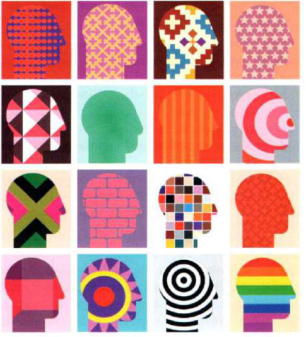ForumIAS announcing GS Foundation Program for UPSC CSE 2025-26 from 19 April. Click Here for more information.
ForumIAS Answer Writing Focus Group (AWFG) for Mains 2024 commencing from 24th June 2024. The Entrance Test for the program will be held on 28th April 2024 at 9 AM. To know more about the program visit: https://forumias.com/blog/awfg2024
We have been evolving from art with remarkable intelligence to artificial intelligence in the creation of new art forms. Art and intelligence have always been bound to each other since ancient times. However, the rise of digital technology has given birth to new art forms, such as digital painting, graphic design, animation, and interactive media.

What is the history of art with remarkable intelligence?
Early humans developed significant art with their intelligence. For ex- Art made of stone and ivory, pottery, metallurgy, textile manufacture, bead-making, wood-carving, cart-making, cave painting.
During the first urbanisation in India, which took place between 2600-1900 BCE, Harappan civilisation emerged as a civilisation famous for its art with remarkable intelligence. For ex- Invention of wheel, intercropping, lost wax technique, alloying technique to make figurines.
During the second urbanisation in India, which took place in the Ganga valley also displayed remarkable intelligence. For ex- Delhi Iron Pillar, which is 1500 years old, consists of six tonnes of wrought iron and uses phosphorous in the iron, is an excellent example of art with intelligence. This iron pillar is famous for its rust-resistant properties.
How is Artificial intelligence being used to enhance Art features?
The combination of art and digital technology has led to the creation of a new, revitalised
form of art known as ‘digital art’. The rise of digital technology has given birth to new art forms, such as digital painting, graphic design, animation, and interactive media.
Artists use digital tools like tablets, software programs, and digital cameras to create stunning visual artworks that were previously impossible to achieve with traditional methods.
Use of Digital Technologies in the following art forms in Modern Times
| Visual Art | There has been new digital innovation in the field of Visual art, especially in cinema. New technologies are being used to create a visual imagination of our cultural places, cultural attire. |
| Painting | Digitisation is being used to create abstract painting |
| Sculpture | 3D techniques are being used to make digital sculptures using laser technology, and digital impression of sculpture using projection technology. |
| Architecture | Remote sensing to Aerial exploration is used to gather calculative data required to make an architecture. |
| Dance | Laser lighting is used to create a persona where a person is dancing, using laser lights. |
| Music | Instruments are now being digitally played to synchronise the voices of artists. |
| Cinematography | VFX technology and Voice in cinema is being used in cinematography. |
What are the advantages of use of artificial intelligence in art?
1. Development of Digital space for art institutions- The use of artificial intelligence has marked a significant turning point in the development of the digital space for art institutions like virtual art museums, exhibitions, virtual conservatories, theatres.
2. Expanding audience Reach- Websites, social media platforms, online galleries, and digital art marketplaces allow artists to reach a wider audience and connect with fellow creators.
3. Increase in sales- Digital technologies have led to increase in sales of digital artworks by helping them to sell their artwork directly to collectors.
4. Digital preservation- Digital preservation techniques, such as digitisation, metadata management, and digital archiving are essential for ensuring the long-term preservation and accessibility of digital artworks for future generation.
5. Increasing accessibility- Digital era has helped to create new art and cultural expression forms, making them accessible worldwide.
What are the challenges in the digital era of art?
1. Lack of training and resources- Many artists lack training and resources in digital art creation, which requires proficiency in digital tools and software.
2. Concerns about quality and authenticity of artworks- The proliferation of digital art online makes it difficult to discern the quality and authenticity of artworks, leading to trust and credibility issues.
3. Digital manipulation- Digital technologies are used inappropriately, like fake or defaced videos. The distinction between original artworks and digital forgeries or replicas have become more challenging.
4. Data Privacy concerns- Collection and storage of personal information, conduction of financial transactions, and sharing creative content online carry inherent data breach risks that require robust cybersecurity measures and data protection protocols.
What Should be the way Forward?
1. Copyright laws and Digital rights mechanisms- Copyright laws and digital rights mechanisms must be streamlined to look out for the interests of artists and consumers.
2. Digital technology- We must restrict ourselves and create boundaries for how much we use digital technology.
3. Measures against Digital manipulation- Safe and responsible use of AI in accordance with Bletchley Declaration principles to guard against digital manipulation.
| Read More- Indian Express UPSC Syllabus- GS 1- Art and architecture in modern times |




